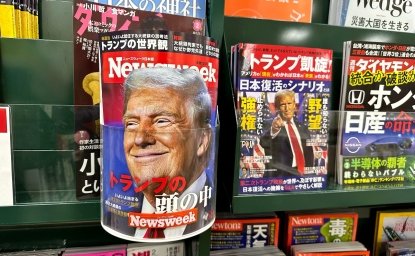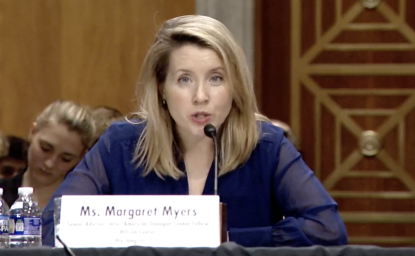More Friends than Foes: Sino-Japanese Relations in 1984



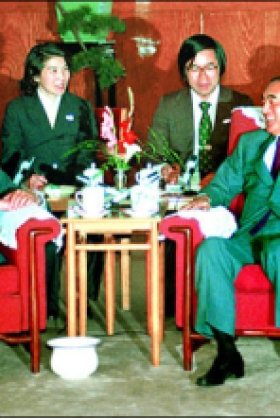
CWIHP e-Dossier No. 48
More Friends than Foes: Sino-Japanese Relations in 1984
Charles Kraus, Sergey Radchenko, and Yutaka Kanda
This e-Dossier introduces records of Japanese Prime Minister Nakasone Yasuhiro’s visit to China in March 1984. This visit, which included a summit meeting with the Chinese leader Deng Xiaoping, was neither a turning point nor a new departure for Sino-Japanese relations on the scale of Tanaka Kakuei’s rapprochement with China in 1972, or Deng’s trip to Japan in 1978, which came soon after the signing of the Treaty of Peace and Friendship between the two countries. It is for this reason, perhaps, that it has not attracted much scholarly attention. Nevertheless, the summit offers an important snapshot of Sino-Japanese relations at, arguably, their postwar best, a honeymoon, when many of the irreconcilable problems that have since poisoned relations between the two neighbors—territorial disputes, the Yasukuni Shrine controversy, disagreements over historical wrongs, and mutual accusations of warmongering—were just uncertain whiffs that neither side paid much notice to.[1]
The records introduced here allow us to understand, concretely, the depth and diversity of Sino-Japanese cooperation in 1984.[2] Nakasone discussed with Deng Xiaoping, Hu Yaobang, and Zhao Ziyang not just the political relationship between China and Japan, but also economic cooperation and people-to-people exchanges between the two countries, the situation on the Korean Peninsula, the Soviet military buildup in Mongolia, the potential for Sino-Soviet rapprochement, and the Cambodian-Vietnamese War, among many other topics of bilateral and international significance. Beyond politics, Nakasone and Deng also had a candid and touching conversation about the latter’s career in the Chinese Communist Party (CCP) and the difficulties he faced during the Cultural Revolution. In another series of conversations, Foreign Ministers Wu Xueqian and Abe Shintaro hashed out the details of Sino-Japanese-American relations, China’s participation in the Asian Development Bank (ADB), the international status of Taiwan, Sino-British consultations on the future of Hong Kong, ASEAN’s role in resolving the conflict in Cambodia, and panda diplomacy.
This lengthy list of conversation topics shows that Prime Minister Nakasone was not exaggerating when he claimed that “Japan and China [had] many reasons to cooperate, and no reasons to clash” in 1984. In a sense, then, this summit shows what Sino-Japanese relations could be like if Beijing and Tokyo backed away from the inflated acrimony of recent years. It is also a reminder that there was much more than “massacre” to this relationship. Japan and China could and did get along for long stretches of time. Their disagreements are not as “primordial” as one-sided interpretations of history can lead one to believe.
Personalities
Why were China and Japan able to talk so candidly about, and cooperate so closely on, such a wide range of issues in 1984? One argument to be made is that the personalities in place mattered. Nakasone Yasuhiro and Deng Xiaoping were both strong leaders with considerable control over their respective governments. Their careers, personas, and ambitions engendered mutual respect and allowed for frankness, honesty, and mutual understanding during the summit.
Kenneth B. Pyle has described Nakasone as an ambitious Prime Minister who sought to transform Japan’s position in the international system, while Kamiya Matake has shown how Nakasone’s unusually strong leadership allowed him to usher in profound domestic changes inside of Japan.[3] These traits were on full display during Nakasone’s brief but important visit to Beijing.
Of course, March 1984 was not Nakasone’s first time in China. He was in fact one of the first Japanese conservative politicians to visit the People’ Republic, in 1954.[4] As a young and nationalistic leader, Nakasone had attacked Prime Minister Yoshida Shigeru’s foreign policy, claiming that Japan was too dependent on the United States. It was for this reason that Nakasone visited China, as well as the Soviet Union, at this time.[5] He came again to the PRC in 1973 and then in 1980. But this was Nakasone’s first visit since becoming Prime Minister in November 1982. It therefore offered important indications about what Nakasone expected to achieve in the Sino-Japanese relationship, and how it related to broader aims of his foreign policy.
He had already made headlines with his dynamic and assertive foreign policy gestures. Nakasone’s January 1983 visit to Washington provided an occasion for developing his much-advertised friendship with Ronald Reagan (the “Ron-Yasu” relationship). On that occasion, Nakasone angered Moscow when in an interview to the Washington Post he likened Japan to an “unsinkable aircraft carrier.”[6] This remark was subsequently attributed to a mistranslation, but it nevertheless came to symbolize the strength of the US-Japanese alliance. Even before that, Nakasone became the first postwar Prime Minister to pay an official visit to South Korea—an important breakthrough in Japan’s relations with Seoul. Nakasone’s trip to China was another example of his strong statesmanship, all the more remarkable given Japan’s notably pedestrian record of postwar foreign policy, famously summed up by Charles de Gaulle after he met with the Japanese Premier Ikeda Hayato: who was this transistor salesman?
Like Ikeda, Nakasone realized very well that Japan’s international standing was directly related to its economic might. But, differently from Ikeda, Nakasone was willing to use this might in the service of a pro-active foreign policy, in positioning Japan as the key player in East Asian and in global affairs. Developing a deep, meaningful dialogue with China was integral to this process.
Deng Xiaoping, then still seeking to steer China away from the rocky waters of the Maoist era, mirrored Nakasone in many respects. He was ambitious—perhaps even fearless—in his plans to reform China’ stagnant socialist economy. Equally important, Deng was pragmatic in his foreign policy and far more open to engaging the wider world than his predecessors in power. Ezra Vogel, for example, has previously compared Deng Xiaoping’s trip to Japan in 1978 to Richard Nixon’s trip to China in 1972, commenting that just as only Nixon could have opened relations with the PRC, only Deng could have managed to move forward China’s relations with its former enemy and occupier, Japan.[7]
Even if his frame was small, Deng’s immense stature does glean through in these documents. Prime Minister Nakasone was clearly captivated by Deng and his ability to lead China after going through so much personal hardship. At one point, Nakasone turned the conversation away from politics and asked Deng to recount his “long battle for Chinese independence and unification.” Deng proceeded to describe the trials and tribulations of his years as a member of the Communist Party, including his torturous experiences during the Cultural Revolution, when he was “made to do physical labor.” Nakasone inquired as to how Deng could have endured such adversity, to which Deng noted he “simply dealt with the situation through optimism.” [8]
Deng came across as an authentic, personable man in his talks with Nakasone, particularly as he rejected any notion that he was simply a victim of purges past. He was honest, self-critical, and self-effacing, announcing that “the failures of those times [1949-1976] cannot be all placed on Chairman Mao.” Though he did not specifically reference the Great Leap Forward and the resulting famine which saw millions of Chinese perish, Deng claimed he was partially to blame for whatever catastrophes may have taken place.[9] Deng likewise noted that, despite the positive changes in China which he was then engineering, his legacy was by no means certain. “I cannot predict how things will go or if I will commit errors after turning 80 years old,” Deng revealed. “I cannot make an assessment of myself. It is up to history to evaluate me.”[10]
Deng, of course, was not the only personality who mattered. The Japanese leadership was also impressed by Hu Yaobang, Deng’s protégé and then General Secretary of the Chinese Communist Party. Nakasone enjoyed a particularly close relationship with Hu, calling him a “flawless character” who “left a deep impression with the Japanese people.”[11] General Secretary Hu later reciprocated these compliments when he vouched that Nakasone “values friendship” and “is a person who will play a large role for our countries, as well as the Asian region” in front of the Central Committee of the CCP.[12] Zhao Ziyang’s appreciation and respect for Nakasone was similarly on display, and he made clear that “I still hold in high-esteem the Prime Minister’s famous words, ‘the importance with which the Nakasone Cabinet treats relations with China is unmatched by previous cabinets.’”[13]
These friendly personal connections paralleled the friendly bilateral relations envisioned coming out of the 1984 summit. In Nakasone’s eyes, close Sino-Japanese relations were “the basis for peace in the Asian region, and… a powerful pillar for world peace.” On this point, the Japanese Prime Minister found himself in complete agreement with the Chinese. Deng, in particular, was emphatic that “the development of China-Japan relations into the 21st century is more important than all other issues.” He wanted both sides to look “even further, longer, and wider,” far into the future, “to the 22nd, 23rd, 33rd, and 43rd century.” Allowing for the inevitable hyperbole in these types of meetings, Deng was, in effect, calling for both side to see the big picture, even if that meant overlooking existing frictions and difficulties in bilateral relationship.[14]
What were the issues that the Chinese were willing to overlook? One of them was the notion of Japan’s resurgent “militarism.” At the time, the loudest criticism of the Japanese government’s alleged militarization emanated from the Soviets who suspected Nakasone of plotting to create an “Eastern NATO.” By contrast, Deng Xiaoping at one point even encouraged Japan to rearm, seeing in its weakness an invitation for Soviet expansionism in Asia. Although by the mid-1980s, China’s assessment of the Soviet threat was beginning to change, Beijing continued to downplay the prospects for Japan’s militarization and showed some appreciation for maintaining the strength of the US-Japanese alliance. Zhao Ziyang, for instance, was very careful not to generalize about the nature of Japan’s foreign policy from comments made by a few right-leaning politicians. “We do not believe,” he told the Japanese Prime Minister, “that the Nakasone Cabinet’s security policy is a militarist policy. There are minority elements that are showing militarist actions, but this is a separate issue from the Nakasone Cabinet’s policy.” This nuanced understanding of the Japanese political process stands in interesting contrast to sweeping generalizations of more recent times. [15]
The Issues
Nakasone’s visit to Beijing provided an occasion for the exchange of opinions on a wide range of foreign policy issues. The available Japanese records are particularly revealing when it comes to China’s foreign policy in the 1980s, something that has until now depended almost entirely on “reading between the lines” of official communiques and government propaganda. With Nakasone, “an old friend of the Chinese people,” as the People’s Daily flatteringly called him, the Chinese policy makers were candid and forthcoming.[16] Several of the most important subjects discussed were the Soviet Union, the Korean Peninsula, and economic cooperation.
Resisting the Soviets
Since Leonid Brezhnev’s March 1982 speech at Tashkent, announcing readiness to mend fences with Beijing, the Soviets and the Chinese had been engaged in a low-key dialogue on the normalization of relations. This dialogue, maintained at the level of deputy foreign ministers, fed speculations in the West and in Japan that the two Communist powers would cross out their former disagreements and come back together in a revamped alliance directed against the West. Deng Xiaoping tried to dispel such speculations. On every suitable occasion he claimed that until the Soviet Union removed “three obstacles” to normalization—by which he meant Soviet forces stationed along the Sino-Soviet border and in Mongolia, Soviet occupation of Afghanistan, and Vietnam’s occupation of Cambodia—all talk of normalization was premature.
This subject was discussed in great detail during Nakasone’s visit to Beijing. Chinese policy makers—from Deng Xiaoping down—went out of their way to persuade the Japanese that they still regarded the Soviet Union as menace to China’s security. This was particularly important in view of Moscow’s differentiating approach towards China and Japan. Since late 1983, the Soviets had been trying to draw a line in their propaganda between the “militarist” position of the Nakasone government and China’s relatively more benign foreign policy. For example, in reporting on Hu Yaobang’s trip to Japan in November 1983, TASS claimed that he evaded the “anti-Soviet aspects that the Japanese side tried to emphasize.”[17] At the same time, the Soviets had been trying to play the “China card” against Japan in their bilateral consultations, most recently earlier in March 1984, just prior to Nakasone’s departure for China. On that occasion, Soviet Deputy Foreign Minister Mikhail Kapitsa reportedly told his Japanese counterpart Nakajima Toshijiro that “Sino-Soviet relations were going smoothly.” China’s Foreign Minister Wu Xueqian was blunt in dismissing Kapitsa’s claims. “We hope you do not believe this,” he told the Japanese. [18]
Nakasone generally found himself on the same page with the Chinese in the assessment of the Soviet Union.[19] He and Zhao Ziyang agreed that the increased Soviet deployment of SS-20s (intermediate-range ballistic missiles) was a threat to stability in the region and the security of both China and Japan. This was a setback for the Soviets, who had claimed that SS-20s did not target China, and that they were merely a response to the US nuclear build-up in the region. Nakasone also complained that Moscow continued to stock a number of other advanced weapons in the Soviet Far East, including in the “northern territories,” whose continued occupation Abe Shintaro described as the chief obstacle to improved Soviet-Japanese relations. Although the Chinese leaders did tend to shift some responsibility onto the United States for the tensions in Asia, this did not preclude China and Japan from wanting to cooperate on managing the Soviet threat. Remarkably, the two countries may have been engaged in intelligence sharing. Nakasone noted that he “[hoped] that Japan and China can continue to mutually exchange information on new developments and conditions.” Zhao responded positively, “[agreeing] that Japan and China should share information.”[20] Hu Yaobang also promised that “if there are great changes to China-USSR relations, we will immediately notify our friends,” that is, Japan. An assured Nakasone repeated his desire for the “exchange of information with you,” China, on the Soviet Union.[21]
In spite of such alignment of interests between China and Japan, the Chinese were careful to stress their non-alignment. This “independent foreign policy” was publically announced at the 12th Congress of the Chinese Communist Party in September 1982 and was in part a product of Deng Xiaoping’s disappointment with the meagre results of his “leaning” to the side of the United States. He resented the fact that the Americans failed to supply China with advanced technology while insisting on their right to sell weapons to Taiwan. While the West—including Japan—remained the main direction of Deng’s foreign policy, non-alignment allowed China a greater degree of flexibility and additional leverage in negotiations with the West. For all his assurances to the contrary, Deng put the Soviet card back in the play simply by opening a channel to Moscow.
Korea
No regional problem attracted more attention during Nakasone’s talks in Beijing than the situation on the Korean Peninsula. Fostering a dialogue between the North and the South was, in Nakasone’s colorful description, like “trying to fix relations between a man and a woman.” He did not explain who was the man and who was the woman in this troubled family, and he and the Chinese certainly disagreed about the source of trouble. Nakasone’s Foreign Minister Abe Shintaro laid out that it was North Korea, not the South, which was preventing stability on the Korean Peninsula and effective dialogue between the two Koreas. His Chinese counterpart Wu Xueqian, on the other hand, was timid in his response and reluctant to criticize the North, saying only “it is better to engage in dialogue than not engage in dialogue.”[22] Both Wu Xueqian and Zhao Ziyang pinned the blame on the United States for “[changing] its attitude” toward the trilateral talks that were then being proposed by Pyongyang, although Wu recognized this shift came in response to North Korea’s attempted assassination of South Korean President Chun Doo-hwan in Rangoon in October 1983.[23]
Significantly, these talks extended beyond inter-Korean and Korean-American relations, touching on the respective policies and involvement of China and Japan in Korea. China pushed for Japanese-North Korean reconciliation, and Japan pushed for Chinese-South Korean engagement, but neither party was willing to move much on these offers. Zhao Ziyang admitted that China’s policy toward South Korea was evolving, but he demurred when Nakasone proposed that China open up diplomatic relations with South Korea.[24] When Nakasone commented that “China holds the key for the state of the Korean Peninsula” because of its unique and unparalleled ties to Pyongyang, Hu Yaobang retorted that “Japan overestimates China’s influence over North Korea.”[25] And despite prodding from the Chinese, Nakasone said that his “nation’s special relationship to South Korea” precluded a Japanese-North Korean rapprochement.[26]
These disagreements did not turn into barbs, and the conversations allowed China and Japan to have a valuable exchange of views and information. The divergences between the two countries were in fact softened by minor areas where they proposed to cooperate. China and Japan agreed, for example, that ethnic Koreans in China ought to be allowed to meet family members from South Korea, and Japan even made the generous offer to serve as host for such family reunions.[27]
The Economy
Ezra Vogel earlier concluded that “during Deng’s years at the helm, no country played a greater role in assisting China build its industry and infrastructure than Japan.” The documents presented here finally allow us to substantiate this claim.[28] The economic cooperation negotiated during Nakasone’s 1984 visit to China was extensive. Japan agreed to extend some 470 billion yen in credits, as against 300 billion yen for 1979-1980. These loans were to finance key infrastructure projects, including railways, harbors, telecommunications, water supply, and power generation, making Japan by far China’s largest development assistance donor. [29] But Nakasone saw this as just the beginning, or “a drop in the bucket,” of the economic ties between the two countries. The future of Sino-Japanese economic cooperation, insisted Nakasone, lay in the private sphere. Deng echoed his remarks, calling for Japanese companies to make “daring investments,” even in the absence of proper laws. “I am confident in our ability to keep promises,” Deng said.[30]
The details of economic cooperation and Japanese loans and assistance to China were largely worked out by Zhao Ziyang and Nakasone.[31] Hu Yaobang’s remarks on the economy were less specific, though he was earnest in thanking the Japanese. “Although there is little media coverage of Japan’s cooperation in Chinese newspapers,” the General Secretary admitted, “we are sincerely grateful of the Japanese public’s friendly attitude towards our country. China will not forget your warm friendship.” To this end, Hu cited a Chinese proverb: toutao baoli, or “to receive a peach and return a plum.” One day, China would return the favor to Japan.[32]
Conclusion
On March 24, Nakasone spoke to the students and faculty of Beijing University. He announced that Sino-Japanese relations would abide by “four principles”: peace and friendship, equality and mutual benefit, mutual trust, and long-term stability. These were not empty words. Nakasone had committed himself to making China one of Japan’s key foreign partners. That required considerable investment, patience, and hard work. “The future of Japan and China,” he said, “should not be in any way affected, no matter how violent the storms in the world may be. We should set great store by and safeguard Japan-China relations. This belief of mine will never be shaken.”[33] The spirit of these public remarks was evident in all stages of Nakasone’s talks in Beijing. His optimism was fully echoed by the Chinese hosts who emphasized that the Sino-Japanese relationship was, and ought to continue to be, “marked by the ability to exchange views in a frank and friendly manner” in which there was “increasing mutual trust and decreasing suspicion.”[34]
The Sino-Japanese relationship in the 1980s was not without frictions. In 1981-1982, Beijing criticized the Japanese for attempts to gloss over war crimes in school textbooks. Repeated visits by Japanese politicians (including Nakasone) to the Yasukuni Shrine, which honors Japan’s war dead, including 14 Class A war criminals, caused considerable irritation in China. Frustration boiled over when Nakasone prayed at the Shrine on August 14, 1985 in his official capacity as Prime Minister. [35] Yet, the fallout was contained and in 1986 Nakasone was back in Beijing with fresh admonishments to build strong ties. The Japanese Prime Minister liked to talk about his country’s foreign relations in terms of “equations with many variables.” Sino-Japanese relations were one such equation. Nakasone believed that he could reconcile even most difficult variables—like Japan’s historical record—with close relations between the two countries. And very often the Chinese went along with his political mathematics. One can argue that it was, perhaps, due to China’s self-interest, as it needed Japan’s help in its modernization. It is also true that the continued relevance of the “Soviet threat” facilitated closer relations between Beijing and Tokyo from late 1970s until the mid-1980s.
Nevertheless, when during his landmark meeting with Emperor Hirohito in 1978, Deng Xiaoping proposed to “let bygones be bygones,” he really meant it. As someone who had witnessed Japan’s war against China firsthand, Deng was not prone to understating the pain and the suffering that that war brought about. But he was not willing to reduce China’s relations with Japan to a singular meaning. In that, he and Nakasone remained on the same page. Seeing this bigger picture was a mark of true statesmanship that has evaded the later generation of Chinese and Japanese policy makers.
Charles Kraus is a Program Assistant with the Wilson Center's History and Public Policy Program and a Ph.D. student in the Department of History, The George Washington University. Sergey Radchenko is Reader in International Politics, Aberystwyth University, UK. Yutaka Kanda is Associate Professor, Faculty of Law, Niigata University, Japan.
Documents
Document No. 1
Cable from Ambassador Katori to the Foreign Minister, “Prime Minister Visit to China (Summit Meeting),” 24 March 1984
[Source: 2002-113, Act on Access to Information Held by Administrative Organs. Also available at the Diplomatic Archives of the Ministry of Foreign Affairs of Japan. Obtained for CWIHP by Yutaka Kanda and translated by Ryo C. Kato.]
Document No. 2
Cable from Ambassador Katori to the Foreign Minister, “Prime Minister Visit to China (Summit Meeting – Bilateral Relations),” 24 March 1984
[Source: 2002-113, Act on Access to Information Held by Administrative Organs. Also available at the Diplomatic Archives of the Ministry of Foreign Affairs of Japan. Obtained for CWIHP by Yutaka Kanda and translated by Ryo C. Kato.]
Document No. 3
Cable from Ambassador Katori to the Foreign Minister, “Prime Minister Visit to China (Summit Meeting – Economic Cooperation, Economic Exchange),” 24 March 1984
[Source: 2002-113, Act on Access to Information Held by Administrative Organs. Also available at the Diplomatic Archives of the Ministry of Foreign Affairs of Japan. Obtained for CWIHP by Yutaka Kanda and translated by Ryo C. Kato.]
Document No. 4
Cable from Ambassador Katori to the Foreign Minister, “Prime Minister Visit to China (Summit Meeting – Korean Peninsula Affairs),” 24 March 1984
[Source: 2002-113, Act on Access to Information Held by Administrative Organs. Also available at the Diplomatic Archives of the Ministry of Foreign Affairs of Japan. Obtained for CWIHP by Yutaka Kanda and translated by Ryo C. Kato.]
Document No. 5
Cable from Ambassador Katori to the Foreign Minister, “Prime Minister Visit to China (Summit Meeting – International Affairs),” 24 March 1984
[Source: 2002-113, Act on Access to Information Held by Administrative Organs. Also available at the Diplomatic Archives of the Ministry of Foreign Affairs of Japan. Obtained for CWIHP by Yutaka Kanda and translated by Ryo C. Kato.]
Document No. 6
Cable from Ambassador Katori to the Foreign Minister, “Prime Minister Visit to China (Conversation with General Secretary Hu Yaobang),” 25 March 1984
[Source: 2002-113, Act on Access to Information Held by Administrative Organs. Also available at the Diplomatic Archives of the Ministry of Foreign Affairs of Japan. Obtained for CWIHP by Yutaka Kanda and translated by Ryo C. Kato.]
Document No. 7
Cable from Ambassador Katori to the Foreign Minister, “Prime Minister Visit to China (Conversation with General Secretary Hu Yaobang),” 27 March 1984
[Source: 2002-113, Act on Access to Information Held by Administrative Organs. Also available at the Diplomatic Archives of the Ministry of Foreign Affairs of Japan. Obtained for CWIHP by Yutaka Kanda and translated by Ryo C. Kato.]
Document No. 8
Cable from Ambassador Katori to the Foreign Minister, “Prime Minister Visit to China (Conversation with Chairman Deng Xiaoping),” 25 March 1984
[Source: 2002-113, Act on Access to Information Held by Administrative Organs. Also available at the Diplomatic Archives of the Ministry of Foreign Affairs of Japan. Obtained for CWIHP by Yutaka Kanda and translated by Ryo C. Kato.]
Document No. 9
Cable from Ambassador Katori to the Foreign Minister, “Prime Minister Visit to China (Conversation with Chairman Deng Xiaoping),” 25 March 1984
[Source: 2002-113, Act on Access to Information Held by Administrative Organs. Also available at the Diplomatic Archives of the Ministry of Foreign Affairs of Japan. Obtained for CWIHP by Yutaka Kanda and translated by Ryo C. Kato.]
Document No. 10
Cable from Ambassador Katori to the Foreign Minister, “Prime Minister Visit to China (Conversation with Chairman Deng Xiaoping),” 25 March 1984
[Source: 2002-113, Act on Access to Information Held by Administrative Organs. Also available at the Diplomatic Archives of the Ministry of Foreign Affairs of Japan. Obtained for CWIHP by Yutaka Kanda and translated by Ryo C. Kato.]
Document No. 11
Cable from Ambassador Katori to the Foreign Minister, “Prime Minister Visit to China (Foreign Ministers’ Discussion),” 25 March 1984
[Source: 2002-113, Act on Access to Information Held by Administrative Organs. Also available at the Diplomatic Archives of the Ministry of Foreign Affairs of Japan. Obtained for CWIHP by Yutaka Kanda and translated by Ryo C. Kato.]
Document No. 12
“Cable from Ambassador Katori to the Foreign Minister, “Prime Minister Visit to China (Foreign Ministers’ Discussion – Relations with the US),” 25 March 1984
[Source: 2002-113, Act on Access to Information Held by Administrative Organs. Also available at the Diplomatic Archives of the Ministry of Foreign Affairs of Japan. Obtained for CWIHP by Yutaka Kanda and translated by Ryo C. Kato.]
Document No. 13
Cable from Ambassador Katori to the Foreign Minister, “Prime Minister Visit to China (Foreign Ministers’ Discussion – Regarding the Participation of China in the ADB),” 25 March 1984
[Source: 2002-113, Act on Access to Information Held by Administrative Organs. Also available at the Diplomatic Archives of the Ministry of Foreign Affairs of Japan. Obtained for CWIHP by Yutaka Kanda and translated by Ryo C. Kato.]
Document No. 14
Cable from Ambassador Katori to the Foreign Minister, “Prime Minister Visit to China (Foreign Ministers’ Discussion – Relations with the Soviet Union),” 25 March 1984
[Source: 2002-113, Act on Access to Information Held by Administrative Organs. Also available at the Diplomatic Archives of the Ministry of Foreign Affairs of Japan. Obtained for CWIHP by Yutaka Kanda and translated by Ryo C. Kato.]
Document No. 15
Cable from Ambassador Katori to the Foreign Minister, “Prime Minister Visit to China (Foreign Ministers’ Discussion – The State of the Korean Peninsula),” 25 March 1984
[Source: 2002-113, Act on Access to Information Held by Administrative Organs. Also available at the Diplomatic Archives of the Ministry of Foreign Affairs of Japan. Obtained for CWIHP by Yutaka Kanda and translated by Ryo C. Kato.]
Document No. 16
Cable from Ambassador Katori to the Foreign Minister, “Prime Minister Visit to China (Foreign Ministers’ Discussion – The State of the Korean Peninsula),” 26 March 1984
[Source: 2002-113, Act on Access to Information Held by Administrative Organs. Also available at the Diplomatic Archives of the Ministry of Foreign Affairs of Japan. Obtained for CWIHP by Yutaka Kanda and translated by Ryo C. Kato.]
Document No. 17
Cable from Ambassador Katori to the Foreign Minister, “Prime Minister Visit to China (Foreign Ministers’ Discussion – Regarding Hong Kong),” 25 March 1984
[Source: 2002-113, Act on Access to Information Held by Administrative Organs. Also available at the Diplomatic Archives of the Ministry of Foreign Affairs of Japan. Obtained for CWIHP by Yutaka Kanda and translated by Ryo C. Kato.]
Document No. 18
Cable from Ambassador Katori to the Foreign Minister, “Prime Minister Visit to China (Foreign Ministers’ Discussion – Regarding Cambodia Among Others),” 25 March 1984
[Source: 2002-113, Act on Access to Information Held by Administrative Organs. Also available at the Diplomatic Archives of the Ministry of Foreign Affairs of Japan. Obtained for CWIHP by Yutaka Kanda and translated by Ryo C. Kato.]
Document No. 19
Cable from Ambassador Katori to the Foreign Minister, “Prime Minister Visit to China (Foreign Ministers’ Discussion – Bilateral Relations),” 25 March 1984
[Source: 2002-113, Act on Access to Information Held by Administrative Organs. Also available at the Diplomatic Archives of the Ministry of Foreign Affairs of Japan. Obtained for CWIHP by Yutaka Kanda and translated by Ryo C. Kato.]
[1] It has often been said that the March 1984 visit by Prime Minister Nakasone Yasuhiro represented the peak of the bilateral relationship not just in the postwar era, but in all of history. See James Reilly, Strong Society, Smart State: The Rise of Public Opinion in China’s Japan Policy (New York: Columbia University Press, 2012), 66; Soeya Yoshihide, “Japan’s Relations with China,” in The Golden Age of the U.S.-China-Japan Triangle, 1972-1989, ed. Ezra F. Vogel, Ming Yuan, and Tanaka Akihiko (Cambridge, MA: Harvard University Asia Center, 2002) 223-224; Hidenori Ijiri, “Sino-Japanese Controversy since the 1972 Diplomatic Normalization,” The China Quarterly 124 (December 1990): 648-649.
[2] This e-Dossier introduces only the declassified Japanese records of the summit. The Chinese version of Nakasone's meeting with Deng Xiaoping (which includes direct citations from the memorandum of conversation on March 25, 1984) appears in Deng Xiaoping yu waiguo shounao ji jizhe huitan lü bianji zu, ed., Deng Xiaoping yu waiguo shounao ji jizhe hu tan lü (Beijing: Taihai chubanshe, 2011), 70-73. However, it is far less extensive than the Japanese version presented here.
[3] Kenneth B. Pyle, The Japanese Question: Power and Purpose in a New Era, 2nd ed. (Washington, DC: American Enterprise Institute for Public Policy Research, 1996). 4; Kamiya Matake, “Japanese Politics and Asia-Pacific Policy,” in The Golden Age of the U.S.-China-Japan Triangle, 1972-1989, 56.
[4] There were, of course, several visits made by non-conservative Japanese politicians to China prior to 1954.
[5] Morris Low, Science and the Building of a New Japan (New York: Palgrave Macmillan, 2005), 153.
[6] Don Oberdorfer, “Japanese Statements on Defense Draw Warning by Soviets,” Washington Post, January 20, 1983.
[7] Ezra Vogel, Deng Xiaoping and the Transformation of China (Cambridge, MA: The Belknap Press of Harvard University Press, 2011), 295.
[8] “Cable from Ambassador Katori to the Foreign Minister, ‘Prime Minister Visit to China (Conversation with Chairman Deng Xiaoping),’ March 25, 1984, 2002-113, Act on Access to Information Held by Administrative Organs. Also available at the Diplomatic Archives of the Ministry of Foreign Affairs of Japan. Obtained for CWIHP by Yutaka Kanda. http://digitalarchive.wilsoncenter.org/document/119552.
[9] Deng Xiaoping, then, offers a counterpoint to the Mao-centric book by Frank Dikötter, Mao’s Great Famine: The History of China’s Most Devastating Catastrophe, 1958-1962 (New York: Walker & Co., 2010).
[10] “Cable from Ambassador Katori to the Foreign Minister, ‘Prime Minister Visit to China (Conversation with Chairman Deng Xiaoping),’ March 25, 1984, 2002-113, Act on Access to Information Held by Administrative Organs. Also available at the Diplomatic Archives of the Ministry of Foreign Affairs of Japan. Obtained for CWIHP by Yutaka Kanda. http://digitalarchive.wilsoncenter.org/document/119552.
[11] “Cable from Ambassador Katori to the Foreign Minister, ‘Prime Minister Visit to China (Summit Meeting – Bilateral Relations),’ March 24, 1984, 2002-113, Act on Access to Information Held by Administrative Organs. Also available at the Diplomatic Archives of the Ministry of Foreign Affairs of Japan. Obtained for CWIHP by Yutaka Kanda and translated by Ryo C. Kato. http://digitalarchive.wilsoncenter.org/document/119547.
[12] “Cable from Ambassador Katori to the Foreign Minister, ‘Prime Minister Visit to China (Conversation with General Secretary Hu Yaobang),’” March 25, 1984, 2002-113, Act on Access to Information Held by Administrative Organs. Also available at the Diplomatic Archives of the Ministry of Foreign Affairs of Japan. Obtained for CWIHP by Yutaka Kanda and translated by Ryo C. Kato. http://digitalarchive.wilsoncenter.org/document/118846.
[13] “Cable from Ambassador Katori to the Foreign Minister, ‘Prime Minister Visit to China (Summit Meeting – Bilateral Relations),’” March 24, 1984, 2002-113, Act on Access to Information Held by Administrative Organs. Also available at the Diplomatic Archives of the Ministry of Foreign Affairs of Japan. Obtained for CWIHP by Yutaka Kanda and translated by Ryo C. Kato. http://digitalarchive.wilsoncenter.org/document/119547.
[14] “Cable from Ambassador Katori to the Foreign Minister, ‘Prime Minister Visit to China (Conversation with Chairman Deng Xiaoping),’” March 25, 1984, 2002-113, Act on Access to Information Held by Administrative Organs. Also available at the Diplomatic Archives of the Ministry of Foreign Affairs of Japan. Obtained for CWIHP by Yutaka Kanda. http://digitalarchive.wilsoncenter.org/document/118849.
[15] “Cable from Ambassador Katori to the Foreign Minister, ‘Prime Minister Visit to China (Summit Meeting – Bilateral Relations),’ March 24, 1984, 2002-113, Act on Access to Information Held by Administrative Organs. Also available at the Diplomatic Archives of the Ministry of Foreign Affairs of Japan. Obtained for CWIHP by Yutaka Kanda and translated by Ryo C. Kato. http://digitalarchive.wilsoncenter.org/document/119547.
[16] “People's Daily editorial: warmly welcome Prime Minister Yasuhiro Nakasone,” Xinhua General News Service, March 22, 1984.
[17] Sergey Radchenko, Unwanted Visionaries: The Soviet Failure in Asia at the End of the Cold War (New York: Oxford University Press, 2014), 64.
[18] “Cable from Ambassador Katori to the Foreign Minister, "Prime Minister Visit to China (Foreign Ministers’ Discussion – Relations with the Soviet Union),’” March 25, 1984, 2002-113, Act on Access to Information Held by Administrative Organs. Also available at the Diplomatic Archives of the Ministry of Foreign Affairs of Japan. Obtained for CWIHP by Yutaka Kanda and translated by Ryo C. Kato. http://digitalarchive.wilsoncenter.org/document/119555.
[19] Nakasone regarded China as of one the most important partners in his anti-Soviet foreign policy. In a diary entry dated December 30, 1983, Nakasone indicated as much, when he wrote that “Japan-US [alliance]—the cornerstone. On this result, we will collect ASEAN, Europe and China so as to confront the Soviets.” See Sekai Heiwa Kenkyujo (Institute for International Policy Studies), ed., Nakasone Naikaku Shi: Shiryo-hen (The History of the Nakasone Cabinet: Materials Volume) (Tokyo: Sekai Heiwa Kenkyujo, 1995), 637.
[20] “Cable from Ambassador Katori to the Foreign Minister, ‘Prime Minister Visit to China (Summit Meeting – International Affairs),’” March 24, 1984, 2002-113, Act on Access to Information Held by Administrative Organs. Also available at the Diplomatic Archives of the Ministry of Foreign Affairs of Japan. Obtained for CWIHP by Yutaka Kanda and translated by Ryo C. Kato. http://digitalarchive.wilsoncenter.org/document/119550.
[21] “Cable from Ambassador Katori to the Foreign Minister, ‘Prime Minister Visit to China (Conversation with General Secretary Hu Yaobang),’” March 25, 1984, 2002-113, Act on Access to Information Held by Administrative Organs. Also available at the Diplomatic Archives of the Ministry of Foreign Affairs of Japan. Obtained for CWIHP by Yutaka Kanda and translated by Ryo C. Kato. http://digitalarchive.wilsoncenter.org/document/118846.
[22] “Cable from Ambassador Katori to the Foreign Minister, ‘Prime Minister Visit to China (Summit Meeting – Korean Peninsula Affairs),’” March 24, 1984, 2002-113, Act on Access to Information Held by Administrative Organs. Also available at the Diplomatic Archives of the Ministry of Foreign Affairs of Japan. Obtained for CWIHP by Yutaka Kanda and translated by Ryo C. Kato. http://digitalarchive.wilsoncenter.org/document/119549; “Cable from Ambassador Katori to the Foreign Minister, ‘Prime Minister Visit to China (Foreign Ministers’ Discussion – The State of the Korean Peninsula),’” March 26, 1984, 2002-113, Act on Access to Information Held by Administrative Organs. Also available at the Diplomatic Archives of the Ministry of Foreign Affairs of Japan. Obtained for CWIHP by Yutaka Kanda and translated by Ryo C. Kato. http://digitalarchive.wilsoncenter.org/document/119557.
[23] Cable from Ambassador Katori to the Foreign Minister, ‘Prime Minister Visit to China (Summit Meeting – Korean Peninsula Affairs),’” March 24, 1984, 2002-113, Act on Access to Information Held by Administrative Organs. Also available at the Diplomatic Archives of the Ministry of Foreign Affairs of Japan. Obtained for CWIHP by Yutaka Kanda and translated by Ryo C. Kato. http://digitalarchive.wilsoncenter.org/document/119549; “Cable from Ambassador Katori to the Foreign Minister, ‘Prime Minister Visit to China (Foreign Ministers’ Discussion – The State of the Korean Peninsula),’” March 26, 1984, 2002-113, Act on Access to Information Held by Administrative Organs. Also available at the Diplomatic Archives of the Ministry of Foreign Affairs of Japan. Obtained for CWIHP by Yutaka Kanda and translated by Ryo C. Kato. http://digitalarchive.wilsoncenter.org/document/119557.
[24] “Cable from Ambassador Katori to the Foreign Minister, ‘Prime Minister Visit to China (Summit Meeting – Korean Peninsula Affairs),’” March 24, 1984, 2002-113, Act on Access to Information Held by Administrative Organs. Also available at the Diplomatic Archives of the Ministry of Foreign Affairs of Japan. Obtained for CWIHP by Yutaka Kanda and translated by Ryo C. Kato. http://digitalarchive.wilsoncenter.org/document/119549. These conversations further substantiate Jae Ho Chung’s claim that China’s policies toward South Korea changed significantly in 1983-1984. See Jae Ho Chung, Between Ally and Partner: Korea-China Relations and the United States (New York: Columbia University Press, 2007), 33-34.
[25] “Cable from Ambassador Katori to the Foreign Minister, ‘Prime Minister Visit to China (Conversation with General Secretary Hu Yaobang),’” March 27, 1984, 2002-113, Act on Access to Information Held by Administrative Organs. Also available at the Diplomatic Archives of the Ministry of Foreign Affairs of Japan. Obtained for CWIHP by Yutaka Kanda and translated by Ryo C. Kato. http://digitalarchive.wilsoncenter.org/document/119546.
[26] “Cable from Ambassador Katori to the Foreign Minister, ‘Prime Minister Visit to China (Conversation with General Secretary Hu Yaobang),’” March 25, 1984, 2002-113, Act on Access to Information Held by Administrative Organs. Also available at the Diplomatic Archives of the Ministry of Foreign Affairs of Japan. Obtained for CWIHP by Yutaka Kanda and translated by Ryo C. Kato. http://digitalarchive.wilsoncenter.org/document/118846.
[27] “Cable from Ambassador Katori to the Foreign Minister, ‘Prime Minister Visit to China (Summit Meeting – Korean Peninsula Affairs),’” March 24, 1984, 2002-113, Act on Access to Information Held by Administrative Organs. Also available at the Diplomatic Archives of the Ministry of Foreign Affairs of Japan. Obtained for CWIHP by Yutaka Kanda and translated by Ryo C. Kato. http://digitalarchive.wilsoncenter.org/document/119549.
[28] Vogel, Deng Xiaoping and the Transformation of China, 310.
[29] “Loan package,” Globe and Mail, March 24, 1984.
[30] “Cable from Ambassador Katori to the Foreign Minister, ‘Prime Minister Visit to China (Conversation with Chairman Deng Xiaoping),’” March 25, 1984, 2002-113, Act on Access to Information Held by Administrative Organs. Also available at the Diplomatic Archives of the Ministry of Foreign Affairs of Japan. Obtained for CWIHP by Yutaka Kanda. http://digitalarchive.wilsoncenter.org/document/118849.
[31] “Cable from Ambassador Katori to the Foreign Minister, ‘Prime Minister Visit to China (Summit Meeting – Economic Cooperation, Economic Exchange),’” March 24, 1984, 2002-113, Act on Access to Information Held by Administrative Organs. Also available at the Diplomatic Archives of the Ministry of Foreign Affairs of Japan. Obtained for CWIHP by Yutaka Kanda and translated by Ryo C. Kato. http://digitalarchive.wilsoncenter.org/document/119548.
[32] "Cable from Ambassador Katori to the Foreign Minister, ‘Prime Minister Visit to China (Conversation with General Secretary Hu Yaobang),’” March 25, 1984, 2002-113, Act on Access to Information Held by Administrative Organs. Also available at the Diplomatic Archives of the Ministry of Foreign Affairs of Japan. Obtained for CWIHP by Yutaka Kanda and translated by Ryo C. Kato. http://digitalarchive.wilsoncenter.org/document/118846.
[33] “Highlights of Japanese Prime Minister’s Speech at Beijing University,” Xinhua General News Service, March 24, 1984.
[34] “Cable from Ambassador Katori to the Foreign Minister, ‘Prime Minister Visit to China (Summit Meeting – Bilateral Relations),’” March 24, 1984, 2002-113, Act on Access to Information Held by Administrative Organs. Also available at the Diplomatic Archives of the Ministry of Foreign Affairs of Japan. Obtained for CWIHP by Yutaka Kanda and translated by Ryo C. Kato. http://digitalarchive.wilsoncenter.org/document/119547.
[35] Kazuhiko Tōgō, Japan’s Foreign Policy, 1945-2009: The Quest for a Proactive Policy (Leiden: Brill, 2010), 143-144.
Authors


Wilson E. Schmidt Distinguished Professor at the Johns Hopkins School of Advanced International Studies
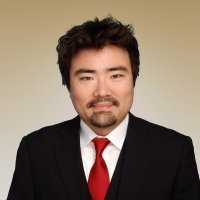

Cold War International History Project
The Cold War International History Project supports the full and prompt release of historical materials by governments on all sides of the Cold War. Read more


History and Public Policy Program
A leader in making key foreign policy records accessible and fostering informed scholarship, analysis, and discussion on international affairs, past and present. Read more


North Korea International Documentation Project
The North Korea International Documentation Project serves as an informational clearinghouse on North Korea for the scholarly and policymaking communities, disseminating documents on the DPRK from its former communist allies that provide valuable insight into the actions and nature of the North Korean state. Read more

Explore More
Browse Insights & Analysis
Myanmar’s Junta and the 2026 Elections: A Fig Leaf for Legitimacy?
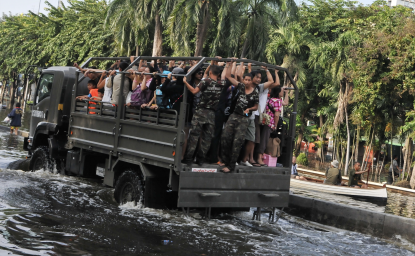
Climate Change, Peace and Security: Discourse Versus Action in Asia
